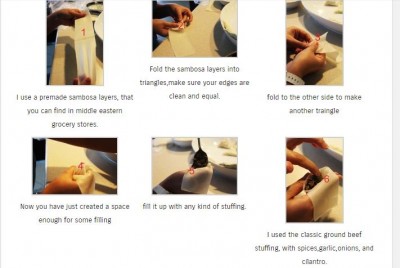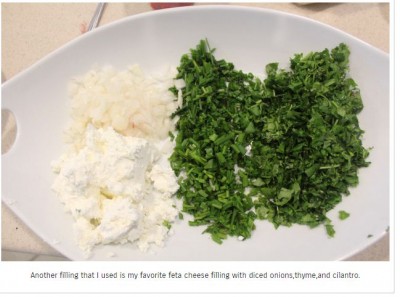Yemen is ”one step” from famine [2], pleads UN Special Envoy for Yemen Ismail Ould Cheikh Ahmed, who notes that ”21 million people are in need of humanitarian assistance” due to the current conflict in the country. These are frightening figures when considering that the total population of Yemen is 24 million.
A truce is being discussed [3]during the holy month of Ramadan or what is left of it, to allow the 99-percent Muslim country [4] to at least fast in peace. Ramadan [5]is the ninth month in the Islamic calendar, during which Muslims fast in commemoration of when their holy book, the Quran, was first revealed to Prophet Muhammed.
But long before the crisis and the conflict-hit the country, Yemenis used to enjoy Ramadan nights. The country was also famous for its cuisine, and this post is a tribute to the culinary traditions of Yemen during Ramadan. What is also interesting is that every city in Yemen has its own specialties even for Ramadan. So if you one day get the chance to be invited to an Iftar (fast-breaking meal) by someone originally from Aden, it might differ from if you were on a table prepared by someone from Sanaa and so on.
Like many other Muslims, Yemenis first break their fast in the evening by eating dates, [6]which have been known historically for helping people in the desert sustain long hot days as they are rich in calcium, phosphorus, iron, sodium, sulfur and chloride and various vitamins.
The dates are followed by soup and salad, and then the main meal. Lamya Almas or Yemeniyah [7] has a section dedicated only [8] to Ramadan recipes on her food blog.
There, for instance, we can learn how to cook a shurbah baydah [9], literally meaning white soup or the Adeni oatmeal soup in reference to the city of Aden.
 [10]
[10]While in the Yemeni capital Sana'a this soup is sweet, the Adeni variation is rather salty with curry and oatmeal. Copyrights reserved to Yemeniyah Blog
She says:
This is a staple during Ramadan. Very hearty soup, that is a meal in and of itself. In Sana’a they make it sweet and they add milk. But in Aden ours is very different and we make it either plain which we call Shurbah Baydha which literally means “White Soup” or we add a red sauce to it that we make with onions, tomatoes and spices and hence call it Shurbah Hamra meaning “Red Soup”.
You will need:
1) 1/2 pound of lamb cut into small pieces with bone in [you can also use chicken which will cut down the cooking time]
2) 2 cups of rolled oats [or you can use Old Fashioned Quaker Oats]
3) 3 sticks of cinnamon
4) 1/2 tblsp of peppercorns
5) 1/2 tsp of curry powder
6) 1/2 of a medium onion finely chopped
7) 1 small tomato finely chopped
8) Salt to taste
Katherine Abu Hadal [11], from the blog Sheba Yemeni Food’ [12], shows us in this video how to make a Yemeni yogurt salad, which is spicy:
Fattah is a common main meal on a Yemeni table during Iftar. As explained in the blog “ Yemen Food” [13] it is made of:
Fatta, meaning crushed or crumbs, is a sort of bread soup made with pieces of the Yemeni bread bits mixed with meat broth and cooked vegetables making it soggy and mushy. As flatbreads quickly tend to get stiff when exposed to air, it is indeed a way of using stale bread. Fatta can also be made as a dessert with sweet ingredients including dates and honey. In Yemen, fatta is a common meal during the month of Ramadan.
Katrin too shares with us the recipe of her own version on YouTube:
Another thing you are very likely to find on any table during Ramadan would be red meat. Try the lahma mahshoosha [14] (lahma being meat in Arabic) using this recipe shared by Katherine:
First wash and separate the fat from the meat. Cut the meat into small pieces. Heat the fat (if there is not a lot then add butter) in a pot over medium heat until it melts.Then add the meat, onions, garlic, spices and salt. Close the pressure cooker and cook for approx. 20 minutes or until the meat is tender. If you use a regular cooking pot, then the time will be longer, about an hour or so. NOTE: It is always necessary to use liquid with a pressure cooker, but in this case some juices will seep out of the meat to make enough liquid. You need to watch the cooker carefully to make sure all the liquid doesn’t evaporate because this will burn the meat.Once the meat is fully cooked and tender, then remove the pieces onto a pan, leaving the broth and onions in the pot. Broil the meat for about 10 minutes or until it is browned to your taste. Watch this carefully because the broiler can quickly turn the meat black. I leave the oven open to watch.
And here is the video for a better demonstration:
For dessert, you are spoiled for choice. You can, for instance, have a creamy bulghur (close to semolina) pudding [15]; find a simple recipe on the blog Tried and True Eats [16]. It is the sweet version of the shurbah baydah we mentioned at the beginning.
Combine water, bulghur, and salt in saucepan, bring to boil, and cook over high for 20 – 30 minutes until tender and most of the water has evaporated. Add milk and sugar. Simmer for 35 minutes or until thickened and bulghur is soft. If not soft, cover, reduce heat to low and cook for an additional 5 minutes. Place in serving bowls, put a small dallop of semn [17] and honey and enjoy.
But if Yemenis are divided into many things including politics and religion (or at least some want to make it seem that way), there is one meal they all agree on, a typical Ramadan appetizer: sambosa, which is known worldwide as samosa or sambusek, and cooked in every corner of the planet differently. Here is the Yemeni way, as detailed step by step [18] by the blog Yemen Kitchen [19]:

The Yemeni sambosa recipe as posted on “Yemen Kitchen” blog

Sambosa recipe part 2

Sambosa recipe part 3

Sambosa recipe part 4
Finally, don't forget tea [20] or coffee [21], especially since Yemen is famous for the drinks worldwide.
Alongside food also comes plenty of traditions and happiness among family and friends [22] — something that Yemenis might be deprived of for the moment but which are meant to come back sooner or later. Wishing our Yemeni friends peace and happy times ahead.
